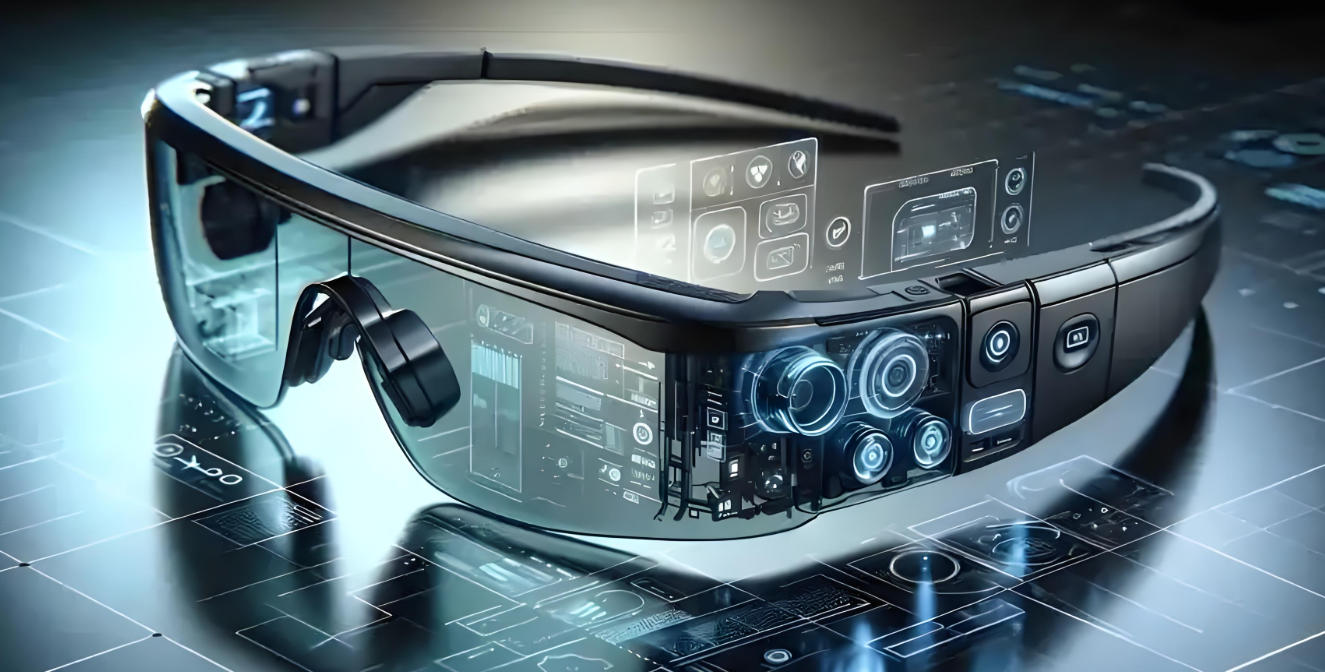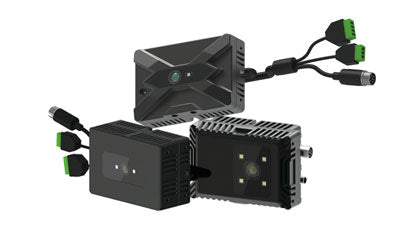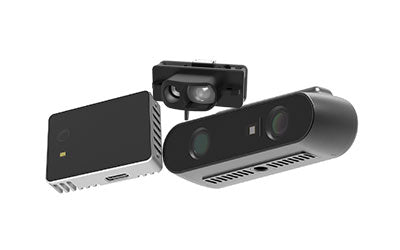TOF in AR/VR: Building the Foundation for Immersive Virtual Spaces

With the rapid development of AR (Augmented Reality) and VR (Virtual Reality) technologies, immersive experiences have become the core demand of users in virtual spaces. To achieve realism and interactivity, precise spatial sensing is the key. TOF (Time-of-Flight) technology, with its high-accuracy depth measurement, has become an indispensable foundational sensing method for AR/VR devices.
What is the measurement of distance?
The measurement of distance refers to determining how far one point, object, or surface is from another. It is usually expressed in units such as meters, centimeters, feet, or miles.
In modern technology, distance can be measured in different ways:
-
Contact methods – using rulers, calipers, or tape measures.
-
Non-contact methods – using sensors such as a distance sensor, distance detector, laser distance sensor, or LiDAR sensor, which rely on light, sound, or electromagnetic signals.
For example, Time-of-Flight (TOF) and laser distance sensors work by emitting light pulses and calculating the time it takes for the reflection to return. This allows for highly accurate distance measurement sensors, widely used in smartphones, AR/VR systems, robotics, and industrial automation.
How does TOF technology enhance AR/VR experiences, and why are precision and accuracy so important in building immersive virtual spaces?
In AR/VR systems, TOF (Time-of-Flight) sensors are a cornerstone for creating immersive virtual spaces because they enable real-time distance measurement and 3D mapping. A precise laser measuring device allows the system to detect the user’s hand gestures, body position, and surroundings with both preciseness and accuracy.
When discussing measurement quality, it’s critical to understand precision and accuracy. Many people ask, “what is the difference between precision and accuracy?” or “what the difference between precision and accuracy?” In short:
-
Accuracy refers to how close a measurement is to the true value.
-
Precision refers to how consistent repeated measurements are, even if they’re slightly off.
For AR/VR, both must work together. Imagine gesture recognition: high accuracy of precision ensures hand movements are tracked correctly, while strong precision calculations and precision equations ensure movements are smooth and stable without jitter. Without this, virtual objects would appear misaligned or shaky, breaking immersion.
Engineers often use precision vs accuracy comparisons (sometimes written as precision v accuracy, precision vs. accuracy, or even common misspellings like precison, prescision, precsion, percion, pressition) to explain why both are equally critical. For example, in AR glasses, the focal length field of view determines how much of the virtual scene can be overlaid onto the real world, while calculating accuracy and precision ensures the overlay is aligned with real objects.
Ultimately, TOF-based precision measurement enables AR/VR systems to calculate user interactions in real time, delivering seamless and natural virtual experiences. Without calculation accuracy and consistent precision and accuracy, immersion would collapse.
1. Spatial Perception Needs for Immersive Experiences
Immersive experiences require systems to not only recognize the user's position but also accurately capture user movements and interaction intentions. For instance, in VR games, players' hand movements, head rotations, and full-body gestures must be tracked in real-time to ensure the virtual scene aligns perfectly with actual actions, achieving immersion and natural interaction. In AR applications, the precise alignment of virtual objects with the real environment is critical—any small deviation can degrade user experience, causing virtual elements to drift or interactions to feel unnatural.
Traditional visual tracking methods primarily rely on 2D cameras or IMUs (Inertial Measurement Units). However, these approaches often suffer from inaccuracies in changing lighting, complex environments, occlusions, or multi-user scenarios, making it difficult to achieve high-precision, low-latency real-time interactions. Especially in large-scale movements, fast hand operations, or low-light environments, conventional solutions cannot meet the stringent spatial perception requirements of AR/VR devices.
In contrast, TOF (Time-of-Flight) technology, by measuring the flight time of light, generates precise depth information, enabling rapid construction of high-precision 3D spatial models and real-time updates of user-environment positional relationships. TOF sensors provide centimeter-level or even millimeter-level spatial accuracy and maintain stable operation under complex or low-light conditions. This allows AR/VR devices to deliver natural, smooth, and high-precision immersive interactions. When combined with AI algorithms, TOF technology also supports gesture recognition, object tracking, and multi-user interactions, ensuring seamless integration between the virtual and real world.
2. Advantages of TOF in AR/VR Tracking and Localization
TOF technology, by measuring the time-of-flight of light, generates high-precision 3D spatial maps rapidly, providing AR/VR devices with reliable real-time tracking and localization capabilities. This depth perception captures both gross and subtle user motions, accurately tracking hands, head, and body movement, ensuring virtual environments remain synchronized with user actions, laying a strong foundation for immersive experiences.
-
Real-time responsiveness: TOF sensors can generate depth data in milliseconds, allowing virtual environments to react instantly to rapid movements or gestures, reducing latency and enhancing immersion.
-
High precision: TOF depth sensing provides centimeter- or millimeter-level spatial accuracy, enabling fine gesture recognition and 6DoF tracking, supporting free movement and interaction within virtual spaces without drift.
-
Low-light adaptability: Unlike traditional vision-based methods that rely on ambient lighting, TOF actively emits infrared light, ensuring stable tracking in dim, low-light, or nighttime conditions.
By integrating AI algorithms, TOF can detect subtle hand movements, complex gestures, and interactive behaviors, enabling actions like object grabbing, rotation, and scaling in virtual environments. Multi-user interactions are also supported, allowing natural collaboration in shared AR/VR spaces. These capabilities make TOF technology a cornerstone for high-precision, low-latency, and natural AR/VR experiences.
3. Typical Applications and Devices
TOF technology is increasingly deployed in AR/VR devices to enhance precision and immersion:
-
Meta Quest Series: High-end VR headsets incorporate TOF sensors for precise room scanning, identifying furniture, walls, and obstacles to plan user movement paths safely. TOF also supports hand tracking and object interactions, allowing users to grab, drag, rotate, and scale virtual objects without controllers, enhancing immersion.
-
Apple Vision Pro: Combines TOF with LiDAR to provide AR glasses with precise spatial perception and depth tracking. Real-time high-resolution 3D depth maps allow accurate placement of virtual objects in real environments. TOF-enabled AI algorithms detect subtle hand movements and gaze direction, supporting complex interactions like object manipulation, UI operation, and dynamic scene response.
-
Other AR/VR Devices: Many devices employ TOF technology for real-time spatial modeling, gesture recognition, and 6DoF tracking, maintaining stability under varying lighting conditions and ensuring virtual environments align accurately with user actions.
Overall, TOF sensors have become essential components in AR/VR devices, supporting precise spatial localization, motion tracking, and interactive experiences. As sensor precision and AI optimization improve, TOF technology will enable cross-device collaboration, multi-scene virtual experiences, and smarter metaverse interactions.
4. Technical Challenges and Industry Issues
Despite the advantages of TOF in AR/VR, practical deployment faces several challenges:
-
Latency: AR/VR immersion demands millisecond-level depth data acquisition and processing. Delays in TOF data capture or rendering may disrupt synchronization, reducing immersion or causing motion sickness. Reducing latency is crucial for user experience.
-
Power Consumption and Heat: High-frame-rate TOF scanning consumes significant power and can cause device heating, affecting comfort and battery life. Solutions include low-power light sources, smart illumination, and energy-efficient edge processors to maintain precision while minimizing energy use.
-
Environmental Adaptability: Reflective surfaces, transparent objects, and strong light can affect TOF depth accuracy, impacting gesture tracking and virtual-real alignment. AI algorithms can compensate for depth data errors, filter out anomalies, and enhance light adaptability to stabilize perception.
-
Solution Strategies: Combine high-efficiency infrared sources, low-latency edge processors, and miniature high-precision TOF sensor arrays with software enhancements such as depth compensation, gesture prediction, and environmental recognition. This integrated approach ensures reliable TOF performance in diverse AR/VR scenarios.
With optimized hardware and AI-assisted perception, TOF technology overcomes latency, power, and environment challenges, enabling high-fidelity, natural AR/VR experiences.
5. Future Trends: TOF + AI Driving Metaverse Interaction
As the metaverse evolves, AR/VR devices are transitioning from standalone experiences to multi-device collaboration, cross-scene interaction, and digital twin environments. TOF technology, as a core high-precision depth sensor, plays an irreplaceable role, providing real-time, accurate spatial data and ensuring tight alignment between virtual environments and user actions.
-
Cross-device interaction: TOF enables multiple AR/VR devices to share real-time depth data, synchronizing virtual environments for multi-user collaboration, virtual meetings, or multiplayer gaming. AI combined with TOF data predicts user actions, adjusting virtual object positions for natural interaction.
-
Digital twins: Real-time 3D depth capture by TOF sensors creates accurate digital replicas of real spaces, merging virtual and physical worlds seamlessly. High precision and low latency allow real-time scene updates, useful in design, construction, and remote maintenance.
-
Intelligent interaction: AI combined with TOF detects subtle gestures, body motions, and facial dynamics, enabling responsive virtual interactions. Objects in the virtual environment automatically adjust to user movements, enhancing realism and immersion.
In summary, TOF technology is central to AR/VR spatial perception, motion tracking, and virtual interaction. With improved sensor accuracy, optimized algorithms, and multi-device collaboration, TOF-enabled AR/VR devices will deliver higher immersion, natural interaction, and seamless metaverse experiences, forming the foundation for a fully interactive digital ecosystem.
Conclusion
TOF technology provides AR/VR devices with precise, real-time, and stable spatial awareness, forming the backbone of immersive virtual experiences and metaverse interaction. As low-power, high-precision TOF sensors and AI algorithms advance, virtual reality experiences will become more natural, intelligent, and immersive.
Synexens Industrial Outdoor 4m TOF Sensor Depth 3D Camera Rangefinder_CS40p
After-sales Support:
Our professional technical team specializing in 3D camera ranging is ready to assist you at any time. Whether you encounter any issues with your TOF camera after purchase or need clarification on TOF technology, feel free to contact us anytime. We are committed to providing high-quality technical after-sales service and user experience, ensuring your peace of mind in both shopping and using our products.






